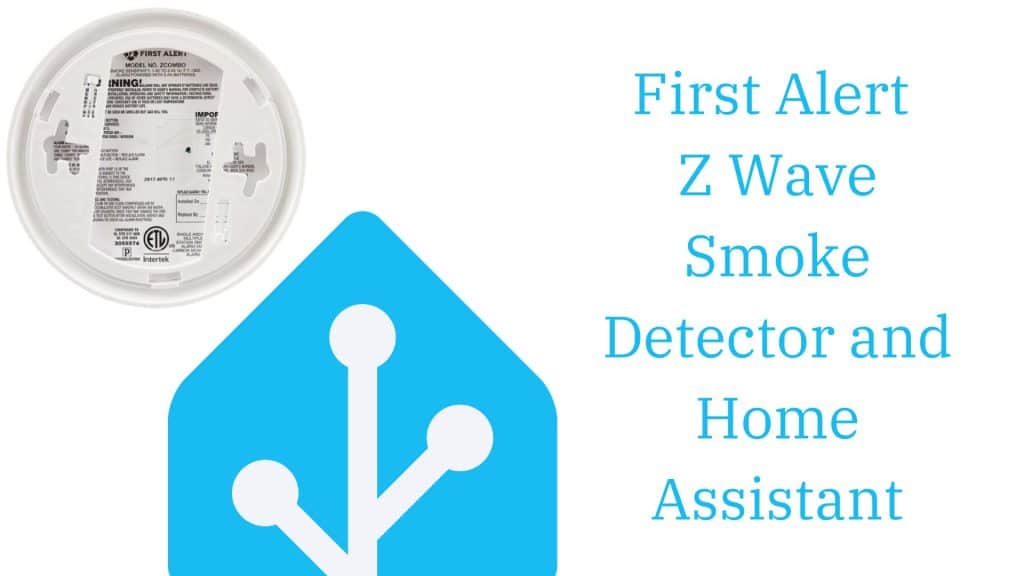First Alert Z Wave Smoke Detector and Home Assistant: Smarter, Safer Homes
Enhancing your home’s safety is now smarter than ever with the First Alert Z Wave smoke detector integrated with Home Assistant. This game-changing combination not only adds a layer of security but also brings modern convenience into your safety protocols.
Imagine getting real-time alerts and managing potential hazards with just a few taps on your smartphone. Dive into this article to discover how this innovative setup can revolutionize the way you protect your home and loved ones.

Smoke detectors are an essential component of any smart home safety system, providing critical alerts in the event of fire or carbon monoxide presence. The First Alert Z Wave Smoke Detector, integrated with Home Assistant, offers a robust solution for these safety needs.
Here’s a detailed guide to help you understand, set up, and troubleshoot this smart device in your home.
Key Takeaways:
- Understanding the features and setup of First Alert Z Wave Smoke Detector with Home Assistant.
- Step-by-step guidance on troubleshooting common issues.
- Insight into product specifications and Home Assistant configurations.
Contents
Understanding the First Alert Z Wave Smoke Detector
The First Alert Z Wave Smoke Detector is a cutting-edge device that offers protection against smoke and carbon monoxide.
Its integration with Home Assistant allows for smart home automation and real-time alerts, enhancing the safety and convenience of your home.
Setting Up the Device with Home Assistant
Setting up the First Alert Z Wave Smoke Detector with Home Assistant requires a USB Aeotec Z-Stick and involves steps like excluding the device from the network and then adding it back.
A common initial step is to ensure that the device is properly excluded before integration.
Excluding the Device
- Slide out the battery tray.
- In Home Assistant Z-Wave console, press ‘Remove Node’.
- Hold the ‘Test’ button and slide in the battery tray, releasing after the first beep.
Adding the Device to the Network
- Repeat the process, but use the ‘Add Node’ button.
- A second beep indicates a successful network join.
Common Setup Issues and Solutions
Users often face issues where alarmType and alarmLevel entities do not show up in Home Assistant or the device does not wake up. Solutions include:
- Re-interviewing the node in Home Assistant.
- Performing the pairing steps while re-interviewing.
- Restarting Home Assistant to make entities appear.
Product Features and Specifications
The First Alert ZCOMBO detector offers features like:
- 2-in-1 detection for smoke and carbon monoxide.
- Battery operation for convenience.
- Compatibility with Z-Wave and Ring systems.
Home Assistant Configuration and Automation
Configuring the detector in Home Assistant involves setting alarm types and levels and creating automation for detection and alerts.
Real-Time Alerts and Notifications
- Configure Home Assistant to send mobile alerts.
- Set up email notifications for detected dangers.
Troubleshooting Tips
If you encounter issues like the device not showing up in Home Assistant or not staying awake long enough for the query process to complete, consider these tips:
- Manually waking the device during the inclusion process.
- Using the open/close battery method for pairing.
- Restarting Home Assistant for entities to appear.
Useful Tables
Here are some tables filled with valuable information regarding the First Alert Z Wave Smoke Detector:
Table 1: Feature Comparison
| Feature | Description |
|---|---|
| Detection Type | Smoke and Carbon Monoxide |
| Compatibility | Z-Wave, Ring |
| Operation | Battery-operated |
| Alerts | Mobile and Email Notifications |
Table 2: Troubleshooting Solutions
| Issue | Solution |
|---|---|
| Entities not showing up | Re-interview node, restart Home Assistant |
| Device not waking up | Manually wake during inclusion, open/close battery method |
Advanced Configuration and Automation
With Home Assistant, you can take the capabilities of your First Alert Z Wave Smoke Detector to the next level. This involves setting up complex automations and integrating it with other smart home devices.
Customizing Alerts and Automations
- Setting up different alerts for smoke and carbon monoxide detection.
- Integrating with smart lights to flash in case of an alarm.
Table 3: Automation Ideas
| Automation Type | Description |
|---|---|
| Light Flashing | Smart lights flash when smoke is detected |
| Mobile Alerts | Receive alerts on your phone for smoke or CO2 |
Additional Troubleshooting Tips
Sometimes, even after the initial setup, you might encounter issues like the device not responding or false alarms. Here are some additional troubleshooting steps:
- Ensure the device firmware is up to date.
- Check for any interference from other wireless devices.
- Validate that the device is within the Z-Wave network range.
FAQs
Here, we address some of the most common questions users have regarding the First Alert Z Wave Smoke Detector and its integration with Home Assistant.
How do I update the firmware of my First Alert Z Wave Smoke Detector?
Check the manufacturer’s website for firmware updates and follow their instructions for the update process.
Can I integrate the First Alert Z Wave with other smart home ecosystems?
Yes, it is compatible with systems like Z-Wave and Ring.
What should I do if my detector gives false alarms frequently?
Ensure it’s not placed near cooking appliances or bathrooms to avoid steam and cooking smoke, which can trigger false alarms.
Concluding Thoughts
This guide aimed to provide you with a comprehensive understanding of integrating and maximizing the First Alert Z Wave Smoke Detector with Home Assistant.
From setup and troubleshooting to advanced configurations and automation, this device, when properly integrated, can significantly enhance the safety and efficiency of your home’s smoke and carbon monoxide detection system.
Remember, the key to successful integration lies in understanding your device’s capabilities, staying updated with firmware, and leveraging the power of Home Assistant to create a smarter, safer home environment.
Resources Links


